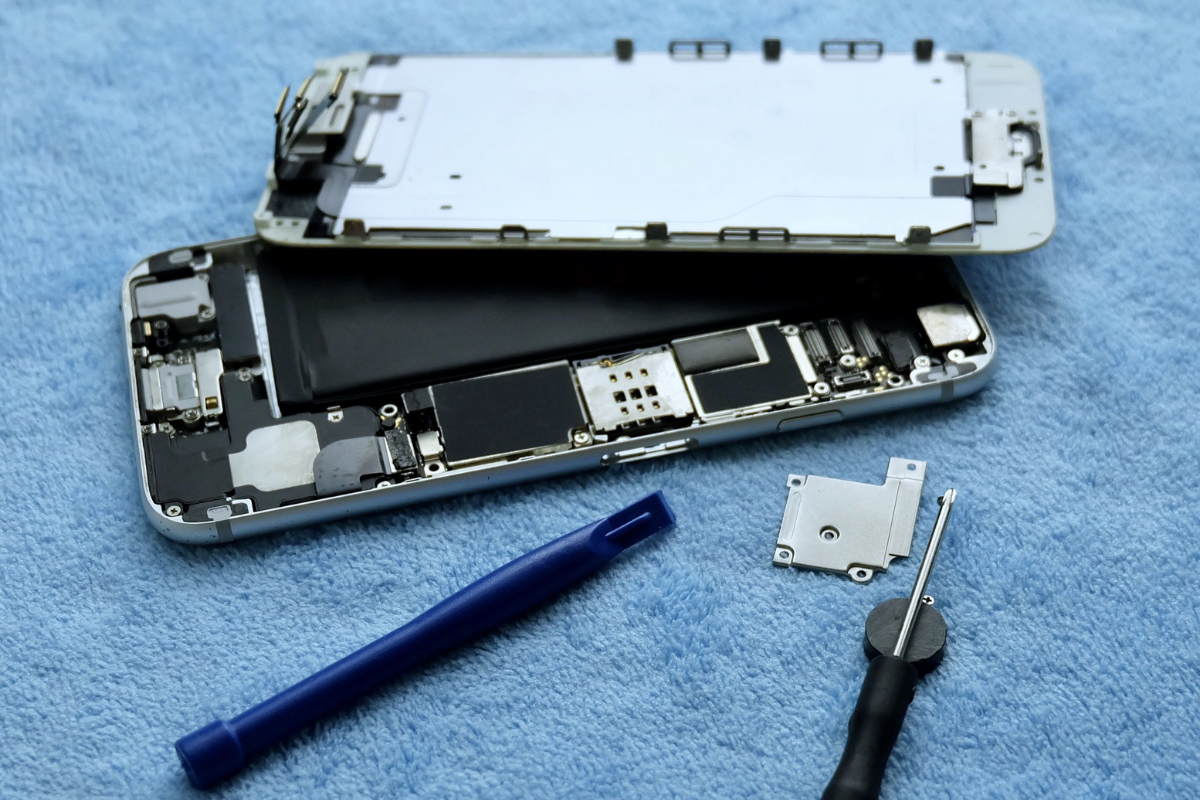:quality(80)/business-review.eu/wp-content/uploads/2023/12/Why-Modern-Phones-Are-A-Repair-Nightmare.png)
Ever find yourself staring at a shattered smartphone screen, contemplating the daunting prospect of repair? You’re not alone.
Our devices connect us to the entire globe with a tap, but the irony lies in the fact that mending them has become an unexpected battle.
The average person spends much of their life on a mobile phone, yet the very idea of repair seems to slip through our fingertips like grains of sand.
Despite being our constant companions, modern phones seem to defy our attempts to rescue them from the clutches of irreparable damage.
As we explore the intricacies beneath the surface of our beloved gadgets, we unravel some of the reasons behind the neverending struggle of phone repair.
Aesthetic Appeal vs. Repairability – The Silent Trade-off
Beneath the sleek exteriors and vibrant displays of modern smartphones lies a deliberate trade-off between aesthetic appeal and repairability. Manufacturers, in their pursuit of design perfection, have created intricately thin and properly sealed devices.
The consequence? Repairability takes a backseat, turning what was before a routine fix into intricate and expensive procedures. Users find themselves at the mercy of authorized service centers or forced into premature device replacements.
The Secret Cycle of Short Lifespans
One of the primary culprits behind the repair nightmare is the concept of planned obsolescence. In fact, many believe this is the reason people are buying a new phone every couple of years.
The study conducted by PIA revealed that 80% of surveyed participants agree manufacturers make repairing smartphones difficult on purpose. Manufacturers engineer devices with a predetermined lifespan, often integrating components with limited durability.
This strategy ensures that after a certain period, users are confronted with sluggish performance, degraded battery life, and outdated software. The result? Frustration and a push toward the next shiny model on the market.
In a notable case, tech giant Apple faced accusations and legal actions regarding its alleged practice of slowing down older iPhones.
Users and consumer advocacy groups claimed that Apple deliberately implemented software updates that slowed down the performance of older devices, creating a perceived need for an upgrade.
Non-removable Phone Batteries
One of the major culprits contributing to the repairability problem is the battery. With an industry-wide push for slimmer designs and extended battery life, manufacturers have embraced non-removable, integrated batteries.
The sleekness enhances aesthetics but creates a formidable hurdle when it comes to battery replacements or upgrades, forcing users into the arms of professional repair services.
The Rise of Adhesives
Traditionally, devices were assembled using screws and other fasteners, allowing for relatively straightforward disassembly. However, the contemporary trend of using adhesives for assembly has emerged as a formidable obstacle to repairability.
The strong adhesives used in modern smartphones make it challenging to open the device without causing damage. According to iFixit, this shift complicates repairs and contributes to the disposable culture surrounding smartphones.
The deliberate choice of adhesives over traditional fasteners has far-reaching consequences for both users and the environment.
Manufacturer Restrictions
Beyond the physical barriers, manufacturers impose software restrictions that hinder independent repairs. Proprietary software and specialized tools often require repairing certain components, limiting the options available to users and third-party repair services.
The reliance on manufacturer-specific software and tools restricts the range of viable repair options, as users and independent technicians find themselves bound to the manufacturer’s ecosystem.
The Environmental Toll
Planned obsolescence not only impacts consumers’ wallets but also takes a toll on the environment. Each time a person feels compelled to discard their seemingly outdated device for a newer model, electronic waste piles up.

The manufacturing and disposal of electronic devices contribute significantly to environmental degradation. According to Statista, the volume of electronic waste generated worldwide in 2019 was roughly 54 million metric tons, which is predicted to increase to 75 million metric tons by 2030.
Factors like increased spending power and the availability of electronics have fueled this surge in e-waste generation. This highlights the urgency of addressing the environmental impact of short-lived electronics, emphasizing the need for sustainable alternatives.
The Rise of the Right to Repair (R2R) Movement
In response to the mounting challenges posed by planned obsolescence, the Right to Repair movement has gained momentum.
Advocates argue that consumers should have the right to repair their devices independently or seek third-party repairs without voiding warranties.
By facilitating access to repair information, tools, and replacement parts, the movement seeks to reduce the environmental impact of discarded devices and mitigate the economic burden on consumers who may be compelled to replace their gadgets prematurely.
Conclusion
In the labyrinth of modern smartphone design, repairability has become a casualty of progress. The intentional choices made by manufacturers, from intricate designs to the use of adhesives and software restrictions, have collectively contributed to a landscape where repairing a device is often more daunting than replacing it.
As consumers, understanding these challenges is the first step towards advocating for change. Whether through supporting the Right to Repair movement, choosing devices with higher repairability scores, or simply being mindful of the environmental impact, we can collectively influence the trajectory of smartphone design. In the ever-evolving world of technology, the power to shape a more repair-friendly future lies in our hands – and in our pockets.




:quality(80)/business-review.eu/wp-content/uploads/2024/07/VGP-Park-Timisoara_-8thbuilding_iulie-24.jpg)




:quality(80)/business-review.eu/wp-content/uploads/2024/06/22C0420_006.jpg)

:quality(80)/business-review.eu/wp-content/uploads/2024/06/COVER-1-4.jpg)



:quality(80)/business-review.eu/wp-content/uploads/2024/06/br-june-2.jpg)
:quality(50)/business-review.eu/wp-content/uploads/2024/07/America-House-Offices-Bucharest-Fortim-Trusted-Advisors.jpg)
:quality(50)/business-review.eu/wp-content/uploads/2024/07/BeFunky-collage-33-scaled.jpg)
:quality(50)/business-review.eu/wp-content/uploads/2024/07/BeFunky-collage-32-scaled.jpg)